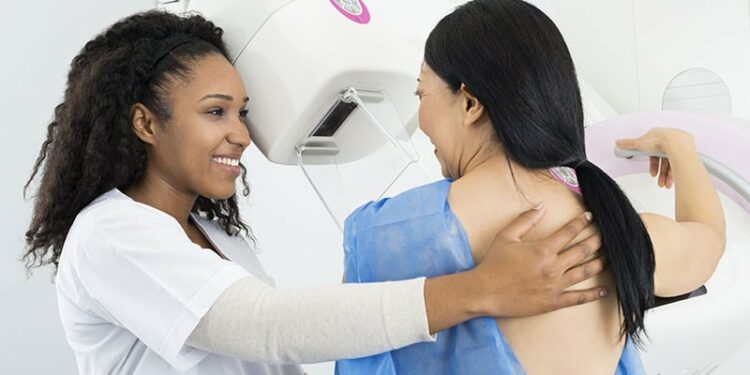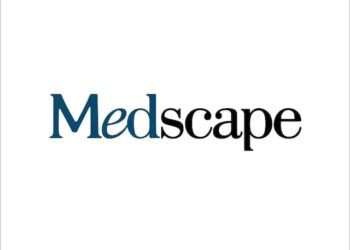SAN ANTONIO — Can breast cancer screening be better tailored to a person’s individual risk of cancer?
Guidelines advise heightened surveillance in certain women, including those with a family history of breast cancer and those with a BRCA mutation, but for average-risk women screening largely remains an age-based, one-size-fits-all proposition.
More specifically, last year, the US Preventive Services Task Force (USPSTF) updated its breast cancer screening guidelines to recommend average-risk women start screening mammograms at age 40 years, down from age 50 years, and screen every other year until age 74 years. The USPSTF acknowledged uncertainty surrounding optimal screening strategies for Black women — who have a 40% higher risk of dying from breast cancer than White women — as well as women with dense breasts — who have a higher risk for breast cancer and may benefit from supplemental screening beyond mammograms — but did not provide tailored guidance for these groups.
Some experts believe a more nuanced strategy is warranted to gauge when to initiate screening for each patient, based on individual risks, and who might benefit from supplemental imaging.
A key step towards this more nuanced approach is to move away from risk models that estimate a woman’s lifetime risk for breast cancer and instead move to models that assess breast cancer risk over 5 or 10 years. This 5-10–year strategy is far more accurate, a panel of breast cancer specialists explained at the recent San Antonio Breast Cancer Consortium in Houston.
The panel of experts also supported risk assessment tools that incorporate more factors into screening decisions, such as obesity, race, and breast density.
Overall, the goal of gaining a more refined understanding of individual risks is to maximize the benefit of screening while minimizing the harms.
“We really can do better,” said panelist Karla Kerlikowske, MD, a professor of medicine and epidemiology at the University of California, San Francisco.
Improving Risk Assessment
The experts highlighted an important step in the right direction for breast screening — the USPSTF’s recent shift to biennial, instead of annual, screening for average-risk women.
Although women might have anxiety about the switch because they’ve been told for years that they need annual screening, research has shown that any added benefit from preventing breast cancer deaths with annual screening is minimal and comes at the cost of substantially more false positives, alongside more testing and stress for patients, said Seema Khan, MD, a surgery professor at Northwestern University, Chicago.
But the USPSTF recommendation to start screening at age 40 years in average-risk women remains too general, Khan and colleagues noted. Data show a high rate of false-positive mammogram findings among women 40-49 years old who undergo biennial screenings — more than half of women over five screening rounds — while only avoiding one breast cancer death per 1000 women.
To better tailor screening decisions for women 40-49 years old, Kerlikowske uses the Breast Cancer Surveillance Consortium Invasive Cancer Risk Model Version 3 (BCSC v3), which evaluates breast cancer risk over 5 and 10 years.
Using this model, Kerlikowske can evaluate a range of factors that may play into a person’s individual breast cancer risk, including age, body mass index, race, family history of breast cancer, a history of breast biopsies, and breast density.
When deciding when to initiate screening in women aged 40-49 years, Kerlikowske uses a benchmark percentage for risk — specifically, 1.4% or higher — because that percentage is the average 5-year risk for breast cancer in women aged 50-59 years. Because only about 12% of women aged 40-49 years old hit the 1.4% risk mark, most women can be spared screening that may not be necessary, she explained.
For 40-year-olds who are interested in breast screening, “I order the mammogram, determine their breast density, calculate their risk, and if it’s 1.4% or greater, I continue screening,” Kerlikowske said. “If it’s not, then I wait until age 50.”
Another reason to move to a 5-10–year risk model, Khan said, is the potential overuse of supplemental screening when using lifetime risks.
Right now, a lifetime risk for breast cancer of 20% or higher qualifies a patient for supplemental MRI. But a patient’s age can obscure these risk assessments.
For instance, Khan explained, a 65-year-old woman’s lifetime risk for breast cancer will likely be lower than that of a 35-year-old because the older woman, on average, has less time to live. The 35-year-old woman, on the other hand, could have a high lifetime risk for breast cancer that may make her eligible for supplemental screening, but her risk in the short-term may be low.
Lifetime risk is “not the right metric for recommending supplemental MRI screening,” Khan said. “It’s completely irrational.”
In her practice, Khan uses a 5% risk for breast cancer over 10 years on the BCSC v3 as the threshold for supplemental MRI. Doing so, Khan finds she can avoid MRIs for a lot of younger women who are just over the 20% lifetime risk threshold but who really are not at a high risk for breast cancer over 10 years.
Best Imaging Approach?
When patients do undergo supplemental screening, is MRI the best modality?
Connie Lehman, MD, PhD, a radiology professor at Harvard University, Boston, argued it’s not. Lehman supports replacing MRI with contrast enhanced mammography for supplemental screening. Both techniques are equally sensitive, she noted, but research has emerged indicating that contrast enhanced mammography is more specific for detecting breast cancer.
While access to MRI screening is limited, contrast enhanced mammography could be widely available at any mammography center with only minimum upgrades, greatly improving the access to supplemental screening as well as decreasing its cost.
Another benefit: Contrast enhanced mammography takes much less time than MRI — about 10 minutes total.
After IV iodine contrast is administered, women undergo four low and high energy scans. A subtractive imaging process removes artifacts, revealing a clear image of the lesion. Although radiation exposure is higher than with standard mammography, she said it is still well below the recommended thresholds for mammography.
Women tend to prefer contrast enhanced mammography to MRI, too. “They would much rather go to their mammography screening center and be out in the open air, not in the MRI scanner, and have the IV with a 10-minute exam,” Lehman said.
A challenge to adopting contrast enhanced mammography more broadly, however, comes down to reimbursement issues as well as habit.
“We have some work to do on CPT [current procedural terminology] codes and support and training for radiologists” to make the transition, but “I think the time has come for contrast enhanced mammography to replace MRI,” Lehman said.
M. Alexander Otto is a physician assistant with a master’s degree in medical science and a journalism degree from Newhouse. He is an award-winning medical journalist who worked for several major news outlets before joining Medscape Medical News. Email: [email protected].
Source link : https://www.medscape.com/viewarticle/canbreast-cancer-screening-be-better-tailored-patient-risk-2025a10001ru?src=rss
Author :
Publish date : 2025-01-24 07:54:49
Copyright for syndicated content belongs to the linked Source.














